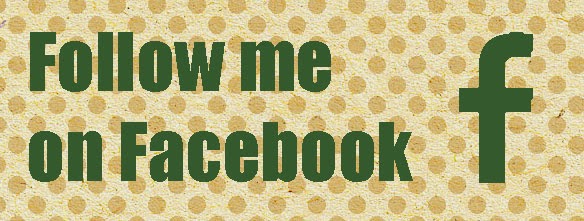After a year on hiatus, Chromacon is back for 2015! Held this weekend at the Auckland Aotea Centre, Chromacon is an indie arts festival that celebrates the coming together of local creativity, innovation, artistic excellence and community.
You will also be able to purchase self-published work such as prints, art books, comics or even original artwork directly from the creatives themselves.This event was conceived by Auckland artist/illustrator Allan Xia, who felt there was a lack of accessible local events for artists/illustrators to showcase and sell their work at outside of exclusive design/advertising events like Semi-Permanent, which aren't always affordable for emerging new artists or the general public.
The first event in 2013 was a great success, and Xia has taken the extra development time to really fine-tune and expand the event, starting with this Friday's Chroma Connect – a creative summit focused on professional development, and the sharing of ideas to promote networking amongst local creatives.
Attendees will have the opportunity to attend master-classes, panel discussions, case studies and networking opportunities. Key areas to be examined include: established and emerging traditional/digital creative practices, transmedia strategies and business models. Chroma Connect enables participants to explore past insights, analyse present challenges, and identify future opportunities.
J.A.W. Cooper (USA): Illustrator
J.A.W. Cooper was born in England and grew up in Africa, Sweden, Ireland and various other locations throughout Europe and California. J.A.W. Cooper currently lives and works as a freelance illustrator, gallery and sketch artist in Los Angeles, California.
Jacky Ke Jiang (USA): Animator
An experienced animator who has worked for Disney Studios and the Cartoon Network on award-winning movies and cartoons like Frozen, Wreck it Ralph, Paperman, and Adventure Time.
Benjamin (China): Illustrator and cartoonist
Benjamin is a prolific Chinese Manhua (Chinese Comics) Artist and illustrator whose work has been published in many different countries and languages.
Wenna (China): Illustrator
Wenna specializes in large-scale mural arts, illustration, ceramics and sculpture. Her diverse living mural projects can be found across major cities of China (Beijing, Shanghai, Chengdu, Nanchang, Jingdezhen, Leshan etc.) as well as Taiwan, Europe and many other nations and cultures.
All four guests will be giving talks during the event, as well as talks from local art and animation guests: including Mukpuddy animation, and Weta concept artist Paul Tobin. There will also be panel discussions on New Zealand Indie Games and of coarse, New Zealand Comics.
The New Zealand Comics Panel will be an informal discussion with four great local cartoonists including: Jonathan King, Li Chen, Gregor Czaykowski (aka Loading Artist) and Jem Yoshioka.
Above: An illustration by Jem Yoshioka. cc-by-sa Jem Yoshioka Creative Commons NZ 3.0 license, 2015.
Jem Yoshioka is an illustrator and cartoonist from Wellington. Her work is influenced by the city and her Japanese heritage, and she uses visual narrative to explore themes of human nature and culture. She works both digitally and traditionally. And at the last Chromacon's in 2013 she won the Comic Award for her story Sunshine. Other comics include Concrete.
Above: An illustration from Loading Artist by Gregor Czaykowski. Copyright Gregor Czaykowski 2015.
Gregor Czaykowski is the cartoonist behind the very successful webcomic Loading Artist, which thanks to his Patron supporters he is now able to work on it full-time.
Above: An illustration from Extra Ordinary by Li Chen. Copyright Li Chen 2015.
Li Chen is of the cartoonist behind the webcomic, Extra Ordinary, which has had a series of highly successful Kickstarter campaigns which have allowed her to publish 3 collected editions and work on the webcomic full-time.
Above: An illustration from Threat Level by Jonathan King. Copyright Jonathan King 2015.
Jonathan King has contributed to Faction Comics, including the upcoming Climate Change special High Water, and is also the film director of the films Black Sheep, Under The Mountain and Realiti.
They'll be talking about their work, art process and upcoming projects.
There will be over 40 local comic creators exhibiting at this weekend's main event, including: Ant Sang, Aimee Cairns, Amy Her-Lee, Anthony Pini, Ben Stenbeck, Benjamin Gary Richards, Braden Gordon, Brendan Boughen, Chris Slane, Cory Mathis, David Ogilvie, Dylan Horrocks, Li Chen, James Davidson, Jason Upchurch, Jem Yoshioka, Jeremy Hanna, Jonathan King, Joshua Drummond, Kayla Oliver, Kirsti Hogan, Ralphi, Linhan Ye, Loading Artist, Marc Streeter, Michel Mulipola, Nick Fedaeff, Orion Mabelle, Pablo Espinosa, Rachel Smythe, Sam Orchard, Simon Fletcher, Sloane Kim, Stacey Robson, Stuart Hallam, Stuart Thomas, Tim Gibson,Toby Morris, Zak Waipara, as well as small press publishers and collectives: Earth’s End Publishing, Pikitia Press, Funtime Comics, and Square Planet.
And that doesn't even include the animators, illustrators, sculpture and craft creators, concept artists, videogame creators and so many more attending the event. So if you're looking for a short of creativity this weekend, or to stock up on some great local comics before winter sets in, Chromacon is the place to be this weekend - and it is FREE to attend!
I also had Allan Xia join me on the National Radio Nights show to talk about the upcoming event. If you missed it last week you can listen to the full interview HERE.
- AK!






























